Looking to get started with using LED grow lights for your indoor plants? This beginner’s guide will show you everything you need to know to get started, including what kind of grow lights to use and how to set them up.
If you want to grow healthy plants indoors, you need to invest in a good set of grow lights. LED grow lights are some of the best on the market, and they’ll help your plants thrive.
What Are LED Grow Lights?
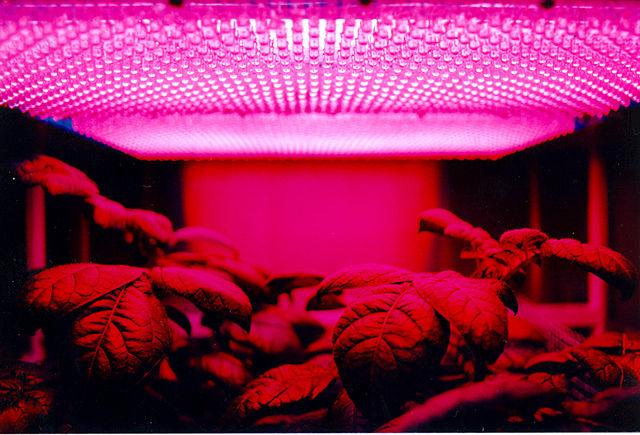
LED grow lights are a type of light that is used to help plants grow. They are becoming increasingly popular as people look for ways to grow plants indoors.
LED grow lights emit a type of light that is similar to sunlight. This light helps plants to photosynthesize, which is how they make food for themselves.
Additionally, these lights are very efficient, using very little electricity and emitting minuscule amounts of heat. This advantage allows you to place the lights closer to the plants without the risk of overheating. They also last a long time, so you won’t need to replace them as often as you would other types of grow lights.
Unlike natural sunlight, LEDs can come in different light colors, which can help plants to grow in different ways. For example, blue light is good for promoting leaf growth, while red light is good for promoting flower growth.
If you’re thinking about getting LED grow lights for your plants, make sure to do some research to find the right ones for your needs. There are a lot of different types and brands of LED grow lights on the market, so it’s important to find ones that will work well for your plants.
How Do LED Grow Lights Work?
LED grow lights are becoming increasingly popular for indoor plants, as they are more efficient and longer lasting than traditional grow lights. But how do LED grow lights work??
LED grow lights work by emitting light at specific wavelengths that are beneficial for plant growth. Plants need light for photosynthesis, which is how they convert light into energy. Different plants have different light requirements, so LED grow lights are available in a variety of colors and wavelengths.
So if you’re looking for a more efficient and longer lasting grow light for your indoor plants, consider switching to LED!
What Are The Benefits Of Using LED Grow Lights For Indoor Plants?
LED, or light emitting diodes, are a type of semiconductor. When electricity is passed through them, they emit light. This makes them ideal for use as grow lights, as they are very efficient at converting electricity into light.
LED grow lights are becoming increasingly popular for indoor gardening, as they have a number of advantages over other types of grow lights.
Unlike fluorescent or HID lights, LEDs are very efficient. This is because they emit very little heat, so less energy is wasted in the form of heat.
Longevity is also a key benefit of LED grow lights, as they are often rated for 50,000 hours or more, while fluorescent grow lights typically only last for 10,000 hours. This means that you won’t have to replace your grow lights as often, which can save you money in the long run.
LED grow lights can also be dimmed, which allows you to control the amount of light that your plants receive. This can be helpful in preventing your plants from getting too much light, which can damage them.
Overall, LED grow lights are a more efficient and longer lasting option for indoor gardening. They can help you save money in the long run, and they offer more control over the amount of light that your plants receive.
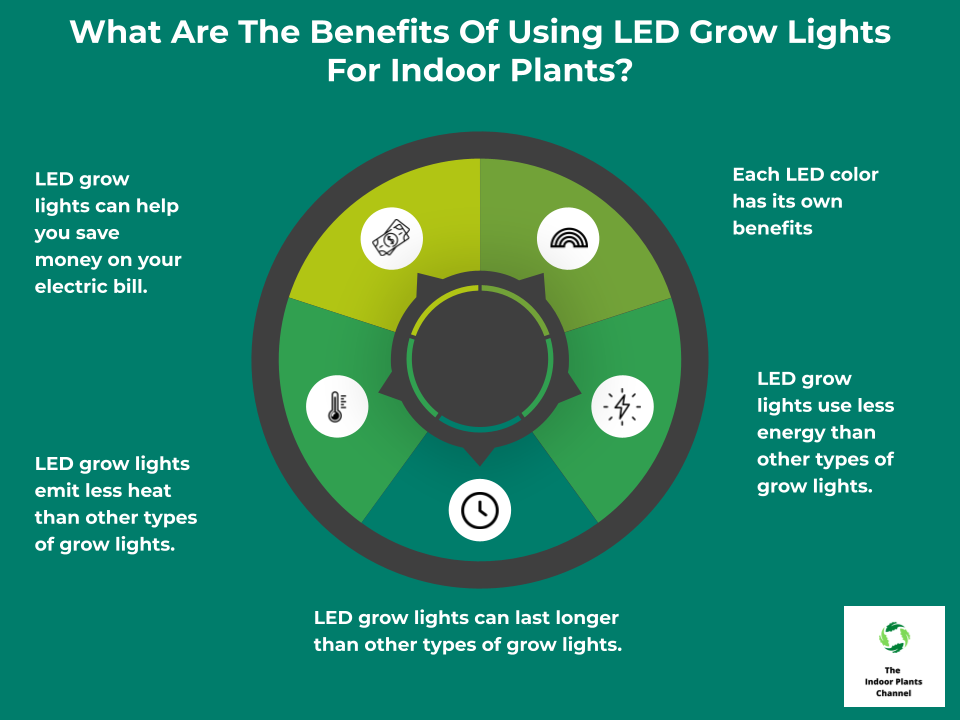
How To Choose The Right LED Grow Light For Your Indoor Plants?
There are a few things to consider when choosing an LED grow light for your indoor plants. The first is the intensity of the light. LED grow lights come in different intensities, so you will need to choose one that is right for your plants. The second is the spectrum of the light. LED grow lights come in different spectra, each of which carries its own unique factors for the plants, so knowing which specific spectrum your plant needs is essential . The third is the price. LED grow lights can be expensive, so you will need to choose one that is within your budget.
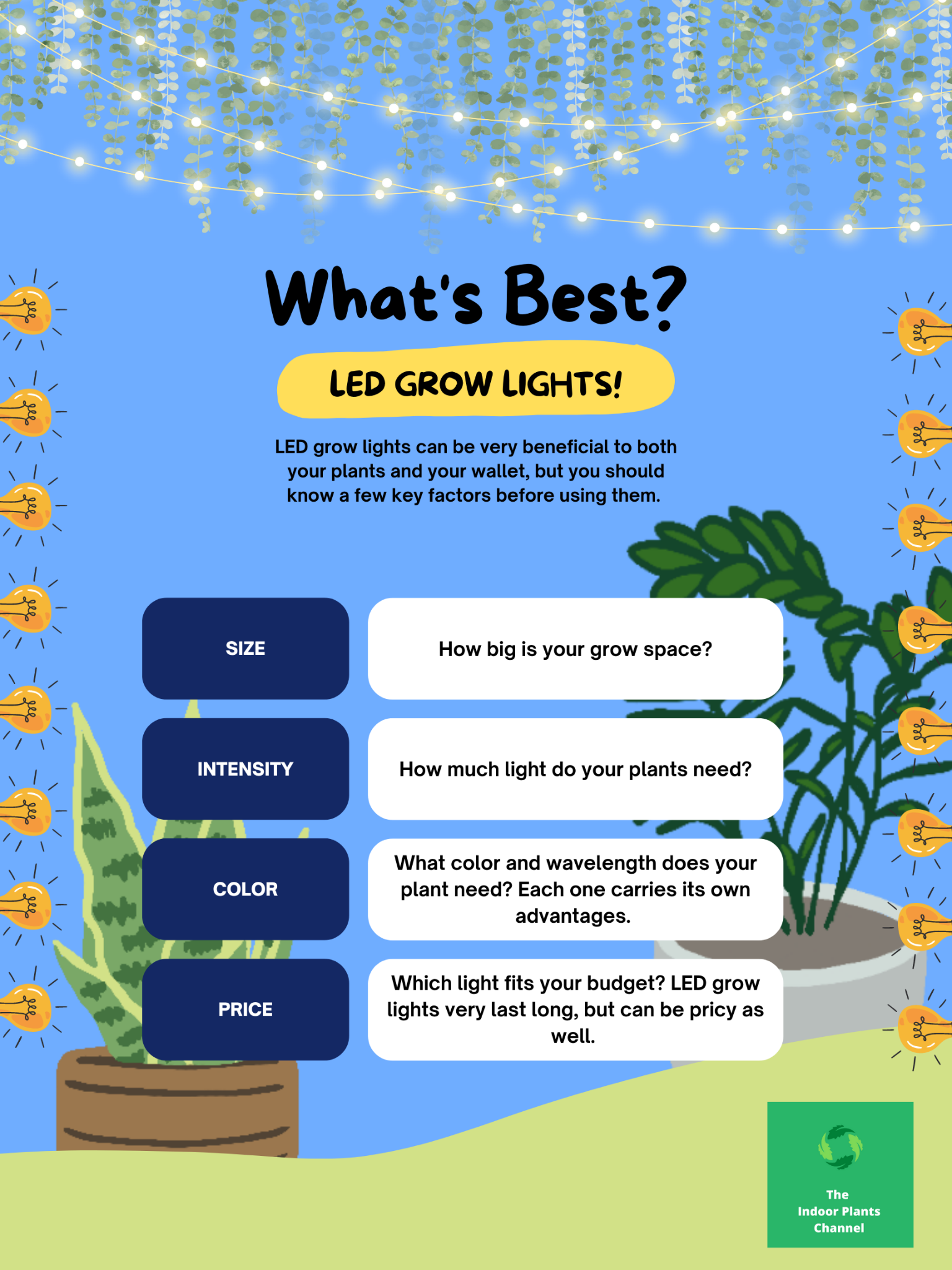
How To Set Up LED Grow Lights For Your Indoor Plants?
There are a few things to keep in mind when setting up your LED grow lights. First, you need to make sure that the lights are the right distance from the plants. If the lights are too close, the plants can become damaged. LED grow lights come in a variety of shapes and sizes. Some are small and can be placed close to the plants, while others are larger and need to be placed further away.
If you are using a small LED grow light, you can place it closer to the plants. Start with the light about 6 inches (15 cm) away from the plants and move it closer or further as needed.
If you are using a larger LED grow light, you will need to place it further away from the plants. Start with the light about 2 feet (61 cm) away from the plants and move it closer or further as needed.
Remember, it is a good idea to experiment to see what works best for your particular plants. Start with the light a little further away and gradually move it closer until you find the distance that works best.
Second, you need to make sure that the lights are not too bright. If the lights are too bright, the plants will not be able to photosynthesize properly and they will not grow as well.
Third, you need to make sure that the lights are the right color. Different colors of light can have different effects on plants. For example, blue light promotes leaf growth, while red light promotes flowering and fruiting. So, if you want your plants to grow more leaves, you would use a blue light. If you want your plants to produce more flowers or fruit, you would use a red light. Other colors of light, such as yellow and green, don’t have a major effect on plant growth. However, they can help to make your plants look more vibrant and healthy.
Fourth, after your LED grow light is set up, you need to turn it on and off at the right times. Plants need a dark period to rest, so you should turn the light off for 12 hours each day. Then, you should turn the light back on for 12 hours each day.
Finally, you need to make sure that the lights are not too hot. If the lights get too hot, they can damage the plants.
By following these tips, you can ensure that your plants will grow healthy and strong.
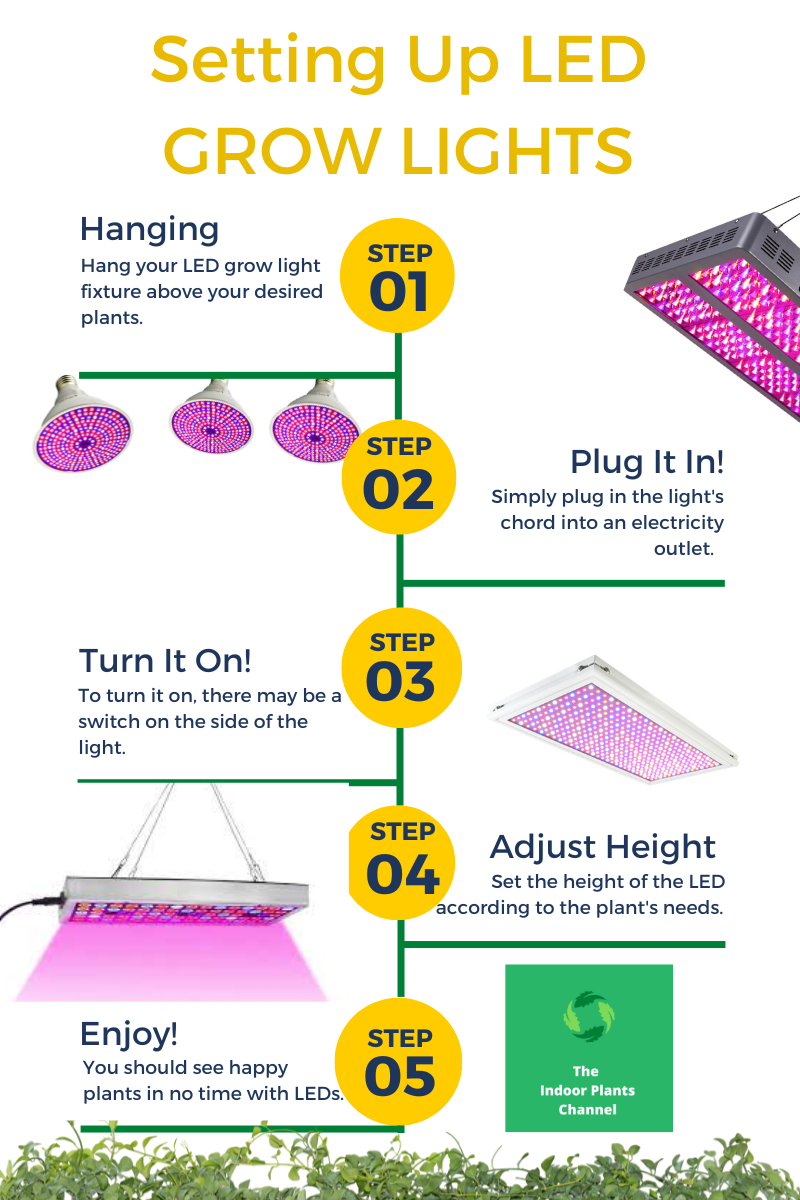
What To Do If Your Indoor Plants Are Not Doing Well With LED Grow Lights?
If your plants are not doing well with LED grow lights, there are a few things you can do to troubleshoot the issue. First, make sure that you are using the correct type of LED grow light for your plant. There are different types of LED grow lights, and each type is best suited for certain plants. If you are not sure what type of LED grow light to use, you can consult with a gardening expert or the staff at your local nursery.
Next, check to see if the LED grow light is the correct distance from the plants. The light should be close enough to the plants so that they can absorb the light, but not so close that the plants are being burned by the light. If you are not sure how far away to place the LED grow light, you can consult with a gardening expert or the manufacturer of the light.
Finally, make sure that the LED grow light is the correct intensity for your plants. The intensity of the light can be adjusted, and you may need to experiment to find the right intensity for your plants. If the light is too intense, it can burn the plants, and if the light is not intense enough, the plants will not be able to absorb it.
If you have tried all of these things and your plants are still not doing well with LED grow lights, you may need to consult with a gardening expert to find out what the problem may be.
Troubleshooting Tips For Using LED Grow Lights With Indoor Plants
If your LED grow light is not working properly, there are a few things you can do to troubleshoot the issue.
First, check the power supply to make sure it is working properly. If the power supply is not working, the grow light will not work.
Next, check the connections to make sure they are all tight and secure. If any of the connections are loose, the grow light will not work properly.
Finally, check the grow light itself to make sure it is not damaged. If the grow light is damaged, it will not work properly.
If you have checked all of these things and the grow light still is not working, you may need to replace the grow light.
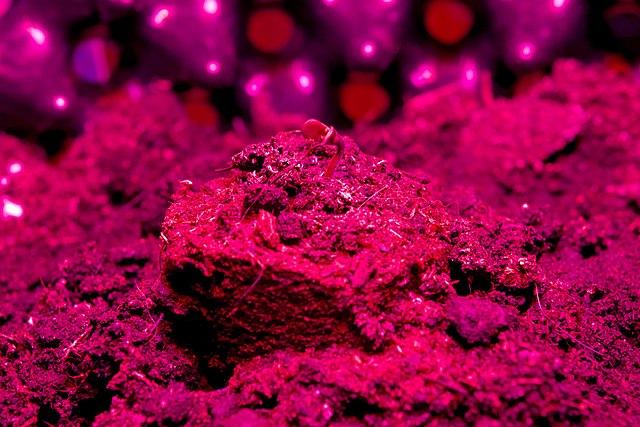
Quick Tips
-Pick the right LED grow light for your needs. There are many different types and sizes of LED grow lights available on the market, so it’s important to choose the one that’s right for your particular setup.
-Make sure to position your LED grow light properly. In order to get the most out of your grow light, you’ll need to place it close to your plants (but not too close!) and ensure that it’s pointing in the right direction.
-Give your plants the right amount of light. LED grow lights are very powerful, so you don’t need to leave them on for very long each day. A few hours of light each day should be plenty.
-Monitor your plants closely. Pay close attention to how your plants are growing and adjust the amount of light they’re getting accordingly.
Conclusion
LED grow lights are the most beneficial to both you and your plants. Not only do they provide a versatile range of factors that can each help your plant, like the spectra, but they also are efficient and long-lasting, which will improve both plant well-being and your pocketbook.
Michelle Wilde
Related posts
5 Comments
Leave a Reply Cancel reply
![]()
About Michelle Wilde
Michelle Wilde is a stay-at-home mom and avid plant lover. Armed with a post-graduate degree in Computer Science (no kidding!), she loves researching plants and landscapes. When she is not caring for her 4 kids, she spends time on her passion for plants. She blogs at www.indoorplantschannel.com, the trusted source for indoor plants.
Learn more
Subscribe
* You will receive the latest posts and updates about indoor plants!
Search
Recent Posts
Categories
- FAQ (218)
- General (1)
- How-To Guides (220)
- Indoor Plants (220)
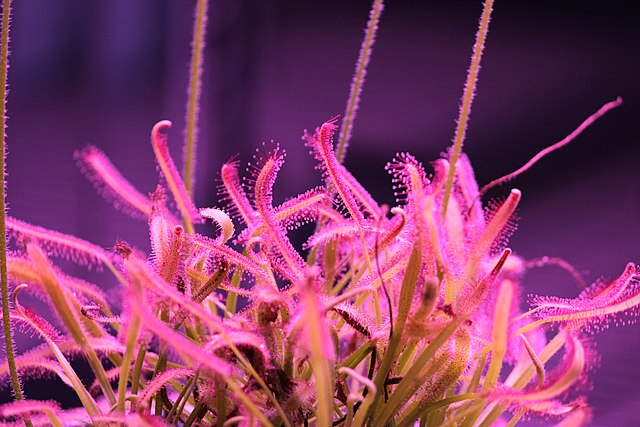
[…] a grow light that will give your indoor plants the best chance to thrive, you should consider using LED grow lights. Here’s […]
[…] grow. They come in all different shapes and sizes, but the most popular type for indoor plants is LED grow lights. LED lights are more energy-efficient than other types of grow lights, and they don’t give off as […]
[…] Give them plenty of light. Resilient houseplants need at least six hours of sunlight each day. If you can’t provide that much natural light, consider using grow lights. […]
[…] last type of grow light is the LED grow light. These are the newest types of grow lights and are becoming more popular because they are more […]
[…] the best place to put it is near a window that gets plenty of natural light. You can also use a grow light to give your plant the light it […]